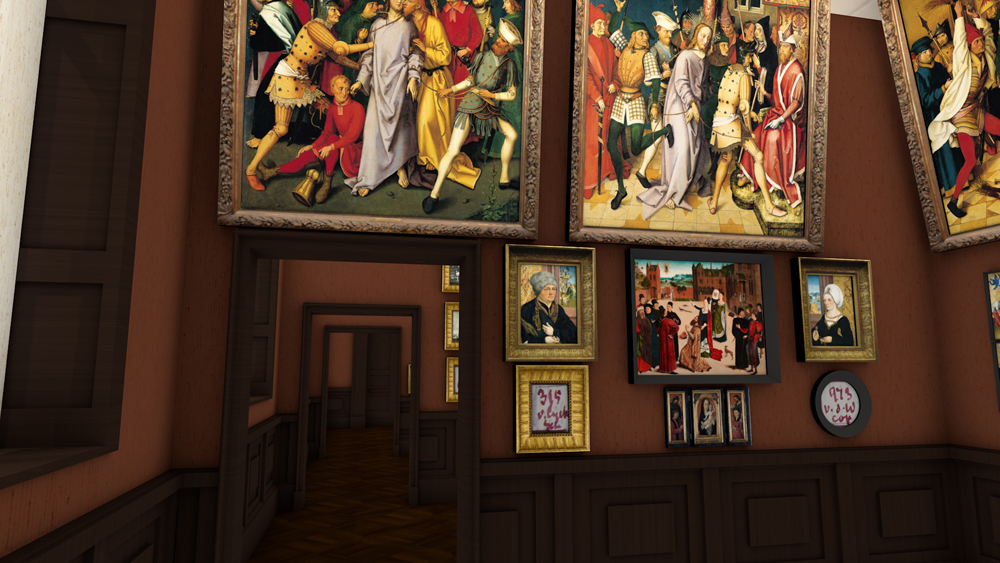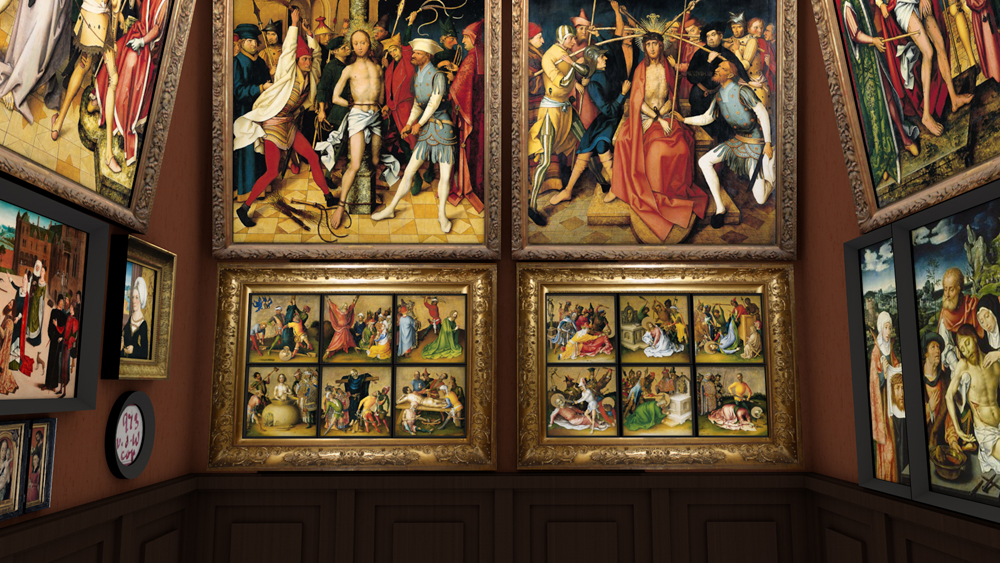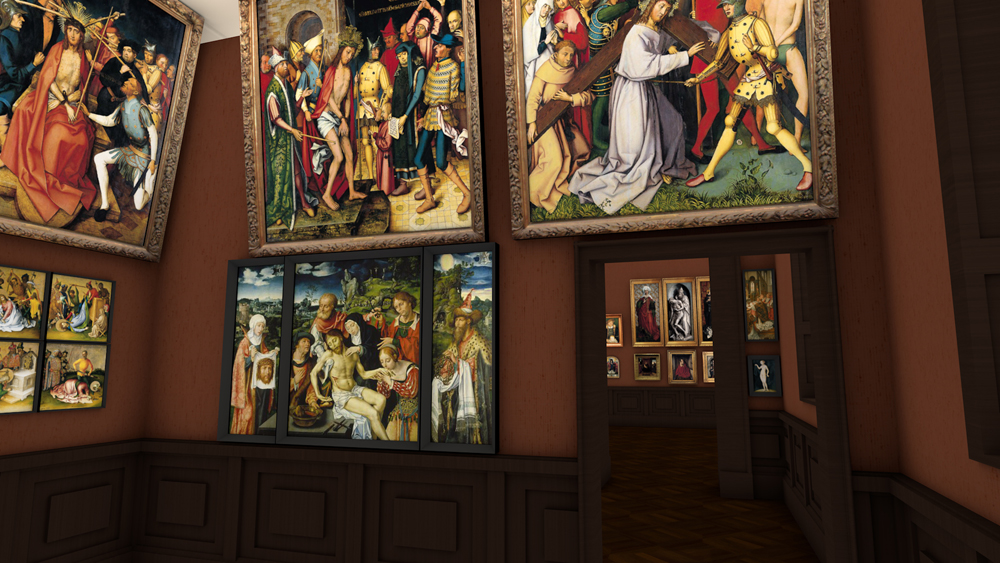1878 Cabinet 2
Holbein the Elder
and the unknown masters
The second cabinet must have been overwhelming. The room was dominated by the large Passion scenes by Hans Holbein the Elder, painted for the main altar of the Frankfurt Dominican church, where they had reached up to the vault.
The profiles of some of the artists represented here had been sharpened over the previous decades: of the creator of the “Martyrdom of the Apostles” on the end wall, known as the “Cologne Master of the Cathedral Altarpiece” (“Kölner Dombildmeister”), it had become known that he was not named “Loethener of Constance” but Stefan Lochner. “Dirck Stuerbout”, to whom “The Prophecy of the Tiburtine Sibyl” was attributed, had correctly been renamed Dierick Bouts. Only with regard to the painter of the “Triptych with the Lamentation of Christ” on the opposite side, people were still groping in the dark – although it was a long-held belief, Joos van Cleve was not identical to Jan van Scorel. Yet, he was also not the same person as Jan Joest van Kalkar, who had been identified as the so-called “Master of the Death of the Virgin” in the 1870s.





